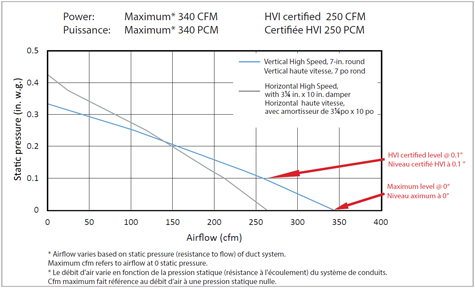Airflow 101: How Range Hood Power and CFM Are Measured
A range hood is one of the most important appliances in the kitchen. It includes a canopy or capture area and a fan that extracts pollutants from cooking and expels them outdoors. By capturing smoke grease steam and airborne contaminants at the source, the hood improves indoor air quality and reduces cleaning time. While there are many types of hoods available, not all deliver the same performance. One of the most critical differences is the hood’s power.
.jpg?width=850&height=478)
Understanding CFM and Why It Matters
One of the key features to evaluate in a range hood is its CFM rating which stands for cubic feet per minute. CFM measures how much air the hood can move. A simple rule of thumb is that you need one CFM for every one thousand BTUs of heat your range produces. For example, a gas range that generates 45,000 BTUs should be paired with a hood that moves around 450 CFM.At first glance this seems straightforward, but airflow is affected by many installation factors which means the rated CFM may not reflect actual performance in your kitchen.
Why Installed Performance Is Often Lower Than Rated Performance
The airflow you get from a range hood or over the range microwave depends heavily on how it is ducted to the exterior. Even a powerful hood can lose performance if the ductwork restricts airflow.Key factors include:
- Duct length: Shorter runs move air more efficiently
- Duct path: Straight ducting performs better than ducting with multiple elbows
- Duct size: The duct diameter should match the hood’s connector
- Duct type: Rigid duct is recommended since flex duct increases resistance
- Static pressure: Poor duct design raises static pressure which reduces airflow
Getting the Right Airflow
To solve the problem of unclear or inflated airflow claims, the Home Ventilating Institute (HVI) certifies airflow and sound levels through a standardized protocol. Broan-NuTone HVI-certifies all of its range hoods which means the stated CFM and sound performance can be trusted. Many manufacturers do not participate in HVI testing which makes it difficult to compare performance accurately.
How HVI Tests Airflow
HVI measures airflow under different static pressure points which simulate various ductwork scenarios. These results are plotted on a performance curve that shows how much air a model can move under different installation conditions.Two common rating points are:
1. HVI Standard Rating at 0.1 Inches of Static Pressure
This is the airflow most often displayed on HVI certified hoods. It reflects performance under a typical well designed duct system.

2. Maximum Power Rating at 0 Static Pressure
This rating measures airflow without any duct connected. These numbers are always higher because no resistance exists. Some non certified brands promote this value as if it represented real world performance.
Broan clearly labels both the HVI 0.1 static pressure airflow and the Maximum Power airflow so homeowners can understand both the rated performance and the maximum capability of the hood.
Learn more about choosing between ducted and non ducted operation here, “Range Hood Filter Guide: How to Clean Replace and Improve Your Kitchen Air”
Conclusion
Always look for the HVI certification label when choosing a ventilation product. Certified testing ensures the CFM airflow numbers are reliable and allow for accurate comparisons. When evaluating a Broan-NuTone hood next to a non certified brand, use the Broan Maximum Power rating as a clearer benchmark for comparison.Proper airflow is essential for effective ventilation and cleaner healthier kitchen air.

 English
English
 English
English